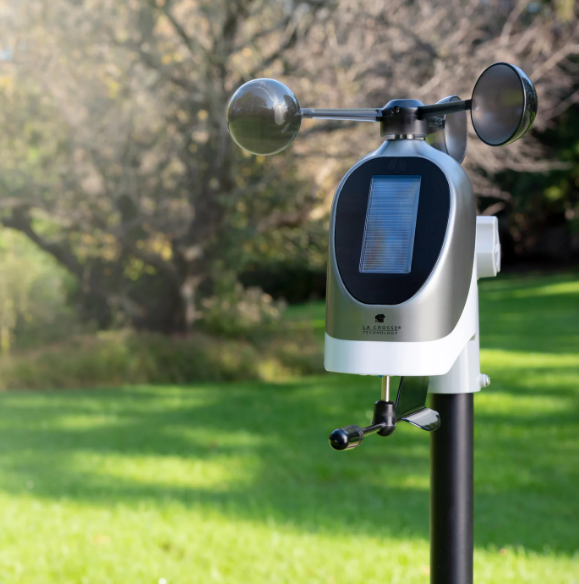La Crosse LTV-W3 Glide Pro Sensor
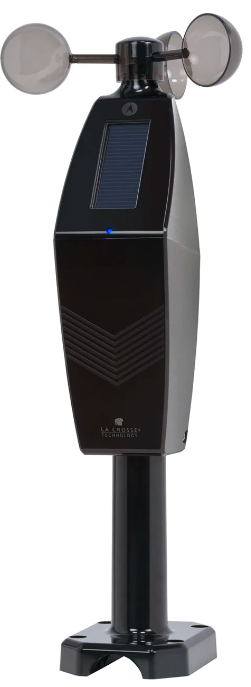
About La Crosse
La Crosse Technology is a company that specializes in manufacturing and selling a wide range of electronic products and accessories, including weather stations, clocks, thermometers, hygrometers, and other home and office electronic devices.
The company was founded in 1985 and is based in La Crosse, Wisconsin. La Crosse Technology is known for producing high-quality, reliable, and accurate electronic products designed to make daily life more convenient and comfortable.
Many of their products are equipped with wireless technology and can be connected to smartphones, tablets, or other devices to provide real-time updates and data readings. La Crosse Technology is also committed to being eco-friendly and incorporates energy-efficient features in many of its products.
Initial Setup
Install the Wind Cups if needed
Follow the instructions below to attach the Wind Cups with a mini screwdriver.
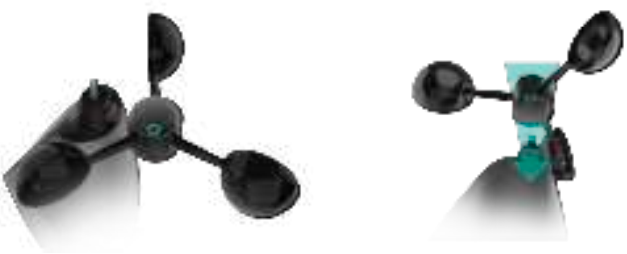
- Remove the Glide Sensor, and Wind Cups, from the package. Take note of the flat edges located on the head of the sensor and underside of the Wind Cups.
- Align the flat edges and place the Wind Cups on top of the sensor.
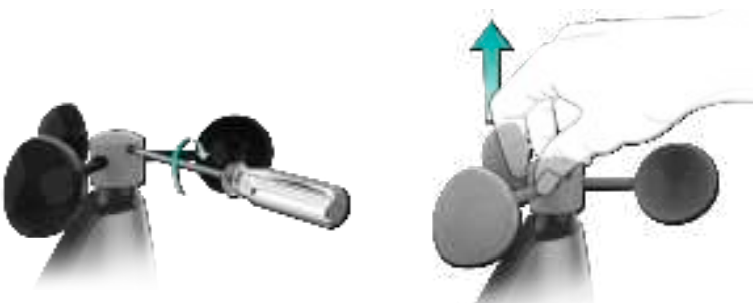
- Carefully tighten the screw on the side of the cups using a mini screwdriver. The screw should tighten into the flat edge of the post.
- When the screw is tight, gently pull up the cups to ensure they are secure. If they pull off, start again with step two.
Power Up

Insert 3-AA batteries into the Glide Pro Sensor according to polarity.
- Press on and slide down the outer cover.
- Lift and remove the battery cover.
- Insert batteries.
- Replace the battery cover and outer cover.
Adding Your Sensor to the La Crosse View App
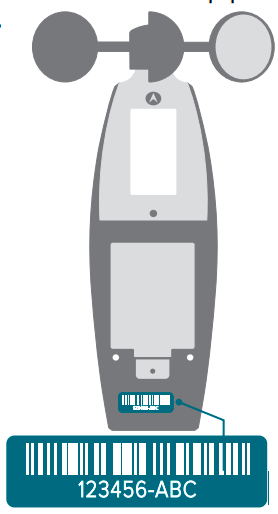
- Open your La Crosse View app. On the Main Menu, scroll to ADD/EDIT and select DEVICES.
- On the Devices page, select the ADD DEVICE or PLUS (+) button.
- Scan the Barcode on your Sensor or type in the Device ID manually.
- Confirm the sensor image and Device ID and add a Device Name and Location Name. Select DONE.
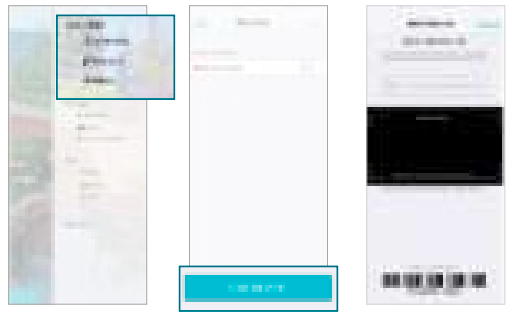
Sensor Placement & Mounting
For Accurate Glide Pro Sensor Measurements
- Ideally, the sensor should be mounted on the tallest object in your area. Avoid positioning it parallel or below eaves, rooflines, trees, or other objects that may obstruct wind readings.
- Make sure all the screws on the Mounting Bracket, Wind Cups, and Battery compartment are securely fastened.
- The sensor should be mounted with the Wind Cups on top.
- To optimize battery life, ensure the Solar Panel is facing the sun. The Solar Panel alone will not operate the sensor, batteries are required.
- For more information visit: bit.ly/wind_sensor_mounting
- The maximum wireless transmission range to the station is up to 400ft (121m) in open air. This does not include walls, floors, or other large obstructions. See page 02 for wind cup installation information.
Basic Installation
Fence posts, poles, decks, and mailboxes are common mounting options due to their convenience. Many users prefer these types of locations as the data they provide is accurate from their ground level. However, because the wind in these spots is often affected by obstructions, the readings may differ when compared to local reporting stations.

- Mount the Mast to a flat surface with the four provided screws.
- Place the Sensor on top of the Mast. Ensure the Solar Panel is facing the sun.
- Secure the Sensor to the Mast by tightening the screws on the side.
Flexible Installation
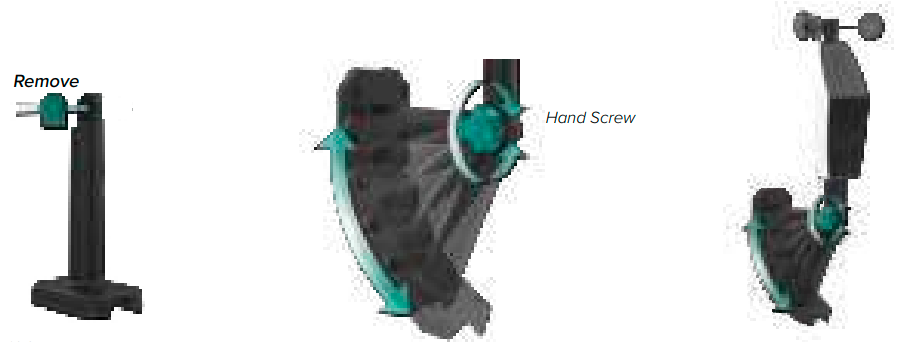
- Remove the Small Insert from the bracket and install the Hand Screw-in its place. Then secure the sensor to the Mast by tightening the screws on the side (step 3 above).
- This configuration allows you to attach the sensor to angled locations and easily make adjustments to ensure the Mast and Sensor are level.
Specifications
Glide Pro Wind Speed Sensor (LTV-W3)
- Wind Speed Range:
0 to 111 MPH (0 to 178 KMH) - Transmission Range:
Over 400 feet (121meters) in open air RF 915MHz - Update Interval:
About every 31 seconds - Power:
3-AA, IEC, LR6 batteries (not included) - Battery Life:
Over 36 months
Warranty
La Crosse Technology, Ltd. provides a 1-year limited-time warranty (from the date of purchase) on this product, relating to manufacturing defects in materials and workmanship.
For full warranty details, visit: warranty
La Crosse Technology, Ltd.
2830 S. 26th Street, La Crosse, Wisconsin 54601
California Residents
CA WARNING: This product can expose you to chemicals including acrylonitrile, butadiene, and styrene, which are known to the State of California to cause cancer and birth defects or other reproductive harm.
For more information, go to: www.P65Warnings.ca.gov
Battery Replacement
Battery Replacement Instructions
When batteries of different brands or types are used together, or new and old batteries are used together, some batteries may be over-discharged due to a difference in voltage or capacity. This can result in venting, leakage, and rupture and may cause personal injury.
- Always purchase the correct size and grade of battery most suitable for the intended use.
- Always replace the whole set of batteries at one time, taking care not to mix old and new ones, or batteries of different
types. - Clean the battery contacts and also those of the device before battery installation.
- Ensure the batteries are installed correctly about polarity (+ and -).
- Remove batteries from the product during periods of non-use. Battery leakage can cause corrosion and damage to this product.
- Remove used batteries promptly.
- For recycling and disposal of batteries, and to protect the environment, please check the internet or your local phone directory for local recycling centers and follow local government regulations.
FCC Statement
This equipment has been tested and found to comply with the limits for a Class B digital device, under part 15 of the FCC Rules. These limits are designed to provide reasonable protection against harmful interference in a residential installation.
This equipment generates, uses, and can radiate radio frequency energy and, if not installed and used by the instructions, may cause harmful interference to radio communications.
However, there is no guarantee that interference will not occur in a particular installation. Suppose this equipment does cause harmful interference to radio or television reception, which can be determined by turning the equipment off and on. In that case, the user is encouraged to try to correct the interference by one or more of the following measures:
- Reorient or relocate the receiving antenna.
- Connect the equipment to an outlet on a circuit different from that to which the receiver is connected.
- Increase the separation between the equipment and the receiver.
- Consult the dealer or an experienced radio/TV technician for help.
Stay in Touch
Ask questions, watch setup videos, and provide feedback on our social media outlets.
Follow La Crosse Technology on Facebook, Instagram, YouTube, and Twitter.
We’re here to help.
Use the links below to find additional resources or reach out to our staff directly. Representatives are available Monday-Friday, 8 am-6 pm CST
Online: bit.ly/contact_techsupport
Phone: 1.608-782-1610
FAQs About La Crosse LTV-W3 Glide Pro Sensor
What is the La Crosse sensor’s range?
The outside sensor and the weather station can communicate across 330 feet (100 metres) in the open air at their maximum range. This range is outdoors in perfect weather.
Why do dashes appear on my La Crosse wind sensor?
Thirty minutes will pass before the station displays dashes if your wind sensor loses contact with it for any reason. Every hour, the station will try to reconnect with the wind sensor for five minutes. Ensure you have high-quality batteries. Look for your sensor manually.
The La Crosse weather station beeps, but why?
There are two possible causes for the station display to beep. One is a failing sensor or one with batteries in it. The sensor may lose and recover connection to the display, causing it to beep, if one of the sensors has failing batteries, even though there isn’t a battery icon on the display.
What is a sensor’s temperature range?
Each potential high temperature application’s suitable sensor is assessed separately and provided with a quote. Our High Temperature model sensors are designed to function within a temperature range of -40 ºF to 400 ºF (-40 ºC to 204 ºC). These sensors are also available.
What is the ideal temperature sensor height?
Place the sensor at least six feet above the ground, vertically. Make sure the sensor has adequate ventilation. It is advisable to find a north-facing, shaded spot because direct sunshine can cause the temperature reading to increase.
How should my outdoor temperature sensor be maintained?
In order to prevent direct and radiant heat, if the sensor is separate, position it in a shady region on the north side of the building. Without radiation shielding, temperature sensors will absorb solar radiation and report a temperature higher than the surrounding air.
The La Crosse View app is it free?
Yes, the best features of the La Crosse View app are available for free. These consist of history graphs, basic data exports, remote monitoring, limitless push notification alerts, and specific Data Streams.
How frequently is the weather station in La Crosse updated?
Forecast updates will be sent to our connected weather stations at least four times a day.
Why is the indoor La Crosse temperature incorrect?
Inaccurate indoor temperature readings are frequently caused by the placement of the display or by over- or underpowered batteries. At home, you can check the correctness. Comparative analysis: Place the outdoor sensor next to the weather station inside the house for two hours after bringing it inside.
What is the sensor’s purpose?
A sensor is an apparatus that senses changes in its surroundings and reacts to an output from another system. A sensor transforms a physical event into a quantifiable analogue voltage, or occasionally a digital signal, which is then sent for reading or additional processing or transformed into a display that is readable by humans.
For more Manuals by La Cross, Visit Manualsdock

